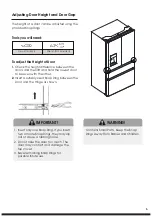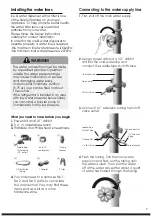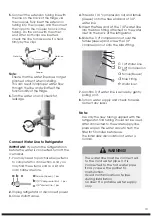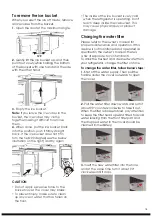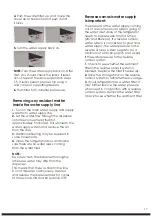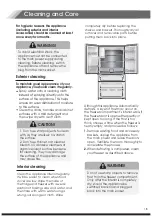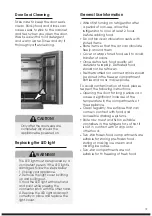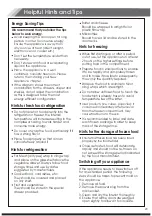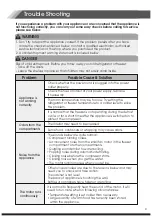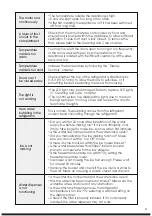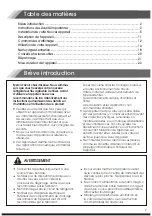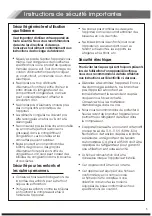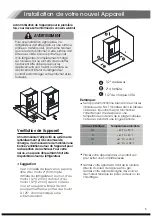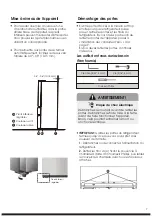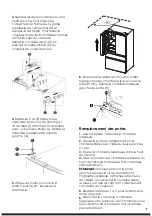
17
4.
Push the water filter up, and move the
cover up to horizontal and push it until
it locks.
5.
Turn the water supply back on.
NOTE:
Turn the water supply back on. After
that, you should check the leaks. If leaks
occur, repeat the above operation steps
1-5. If leaks persisit, please stop using it
and call your supporting dealers.
6.
Removing any residual matter
inside the water supply line
1.
Turn on the main water supply and supply
water from water supply line.
2.
Let the water flow through the dispenser
until it becomes clear (flush for
approximately 5 minutes). This will clean the
water supply system and remove the air
from the lines.
3.
Additional flushing may be required in
some households.
4.
Open the refrigerator door and make
sure there are no water leaks coming
from the water filler.
NOTE:
Be sure to flush the dispenser thoroughly,
otherwise water may drip from the
dispenser.
This means that there is still air in the line.
Do not dispense continuously. Depress
and release the dispenser pad for cycles
of 30 seconds ON and 60 seconds OFF.
Reverse osmosis water supply
is important:
The pressure of the water supply coming
out of a reverse osmosis system going to
the water inlet valve of the refrigerator
needs to be between 30 and 125 psi
(207 and 862 kpa). If a reverse osmosis
water system is connected to your cold
water supply, the water pressure to the
reverse osmosis system needs to be a
minimum of 40 to 60 psi (276 to 414 kpa).
If the water pressure to the reverse
osmosis system
1.
Check to see whether the sediment
filter in the reverse osmosis system is
blocked. Replace the filter if necessary.
2.
Allow the storage tank on the reverse
osmosis system to refill after heavy usage.
3.
If your refrigerator has a water filter, it
may further reduce the water pressure
when used in conjunction with a reverse
osmosis system. Remove the water filter.
Check to see whether the sediment filter
.
.
Flush filter for 5 minuties before use.
Содержание RF200D4CSE
Страница 49: ......




